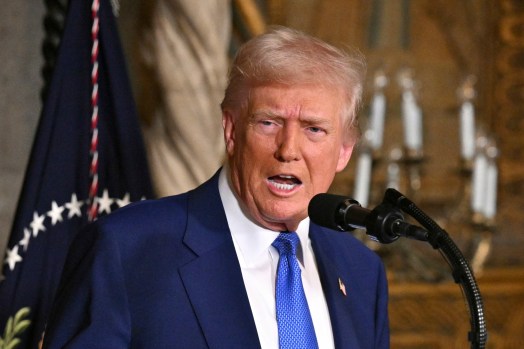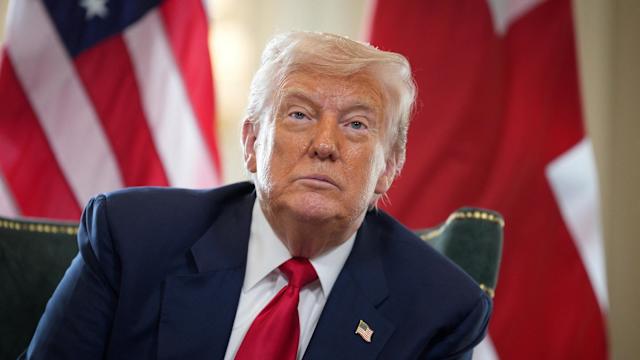In a move that surprised both domestic critics and international trade watchers, former President Donald Trump announced the postponement of proposed higher tariffs on Mexican goods. The decision was framed as a temporary gesture tied to ongoing negotiations, though the long-term implications remain uncertain. The news came amid tense trade discussions with several countries trying to secure better terms ahead of looming deadlines set by the previous administration.
This isn’t the first time Trump used tariffs as leverage in foreign policy. What makes this instance unique is how quickly the delay affected both political reactions in Washington and economic responses in Mexico and beyond. The postponement was seen by some as a sign of flexibility, but by others as a negotiation tactic designed to exert pressure without immediate consequences.
Mexico’s Immediate Response to the Postponement
Following Trump’s announcement, Mexican officials expressed cautious optimism. They acknowledged that the delay offers more time to iron out critical areas of contention, particularly around immigration controls and industrial trade standards. Mexico had previously braced for a possible tariff increase that would have impacted multiple sectors, including auto manufacturing and agriculture.
The postponement was seen as a diplomatic win for Mexican negotiators who had worked swiftly to show tangible efforts in border security and customs reform. In economic terms, Mexico’s stock market showed a brief rally, and the peso gained slightly against the dollar. However, the optimism was tempered by the fact that no permanent agreement had been reached.
Global Reaction and Trade Realignments
While Mexico worked to avoid higher costs, other nations watched closely. Canada, the European Union, and Asian trade partners noted the shift in tone. Countries involved in trade talks with the United States saw the pause as an opportunity to revisit stalled negotiations or fast-track newer deals before the White House resumed its hardline stance.
The broader implication was clear: a temporary pause could still lead to a sudden imposition of tariffs if talks fail. For instance, European officials privately expressed concern that a similar approach could be used against their exports, particularly in the steel and automotive sectors.
China also weighed in diplomatically, suggesting that it hoped for consistency and stability in U.S. trade policy. Though its focus remains on its own complex trade tensions with the United States, any fluctuation in U.S. policy indirectly influences global pricing and shipping routes.
Domestic Reactions in the United States
Inside the United States, reactions to the delay were split along political and economic lines. Critics from the Democratic Party claimed the policy was erratic and damaging to long-term credibility. Some Republican lawmakers, especially those from border states like Texas and Arizona, welcomed the delay, saying it would give businesses relief from looming financial strain.
Business groups also responded quickly. The U.S. Chamber of Commerce issued a statement supporting the delay, emphasizing the importance of stability in the supply chain. Many American companies rely on Mexican suppliers, especially in the food and automotive industries. A sudden increase in tariffs would have meant higher costs for consumers and operational disruptions for businesses.
Farmers in particular expressed relief. The agricultural community has faced repeated uncertainty due to shifting trade policies, and this delay meant their export channels to Mexico would remain intact — at least for now.
Trade Policy as a Political Tool

The decision to postpone tariffs highlights a recurring theme in Trump’s approach to foreign policy: the use of economic pressure as a means to achieve political outcomes. Unlike traditional trade negotiations, which often span years and involve multiple departments and experts, Trump’s tactics often relied on rapid shifts and personal intervention.
Critics argued that this approach created instability, making it hard for long-term investments or commitments to take root. Supporters, however, claimed that it forced other nations to the table more quickly than conventional diplomacy could achieve.
The optics of pausing tariffs while still threatening them again later served both as a carrot and a stick. It allowed Trump to claim a diplomatic gesture without backing away from his broader policy of prioritizing U.S. interests above all.
Mexico’s Border Control Measures Scrutinized
As part of the informal deal tied to the delay, Mexico promised stronger enforcement on its southern border. This included increasing its National Guard presence and stepping up cooperation with U.S. border officials. The specifics, however, remained vague.
Critics questioned how measurable these efforts would be, and whether the Trump administration would use perceived failures as justification to reinstate or escalate tariffs. Immigration advocacy groups also raised concerns about the humanitarian impact of turning Mexico into a de facto buffer zone.
For its part, the Mexican government insisted it was acting independently and not simply bowing to external pressure. Yet, the connection between tariff threats and enforcement action was too strong to ignore.
Other Countries Rush to Secure Deals
In the wake of Trump’s decision, countries like Brazil, South Korea, and Japan increased their outreach to Washington. Trade envoys were tasked with re-engaging on key export agreements and resolving disputes before they risked becoming the next target of tariff increases.
Some trade experts warned that such urgency could lead to unfavorable compromises. When facing the threat of economic penalties, countries may agree to terms that don’t fully reflect mutual benefit. Yet, from their perspective, avoiding instability and preserving market access justified swift action.
This global repositioning was particularly evident in Southeast Asia. Several nations in the region adjusted export strategies, especially in electronics and raw materials, hoping to fill gaps left by strained U.S.-China trade relations.
Businesses Focus on Long-Term Risk Management
In response to this unpredictability, many multinational corporations began reassessing their supply chains. Companies looked into reshoring options or diversifying production lines across multiple countries. Flexibility, rather than low cost alone, became a higher priority.
Shipping companies, freight brokers, and warehouse operators also factored the risk of sudden tariffs into their planning. Insurance policies were updated, and pricing strategies adjusted to account for short-notice changes.
For many, the issue wasn’t just tariffs themselves but the pace at which they could appear or disappear. That uncertainty required a different kind of business agility, one that prioritizes rapid adaptation over fixed systems.
In this dynamic environment, countries working to renegotiate their positions with the U.S. — such as those involved in the current hire bodyguards London style diplomacy — had to navigate both the public rhetoric and the behind-the-scenes realities of economic negotiation.
Watching What Comes Next
The decision to delay tariffs on Mexico does not end the discussion. Instead, it marks another phase in a broader strategy of economic brinkmanship. It reminds both allies and rivals that trade under Trump often shifted direction quickly.
Some viewed the delay as a pause. Others saw it as the calm before more pressure-filled talks. What’s clear is that trade policy served not only economic goals but also political ones. Countries around the world had to adjust their strategies in response.






